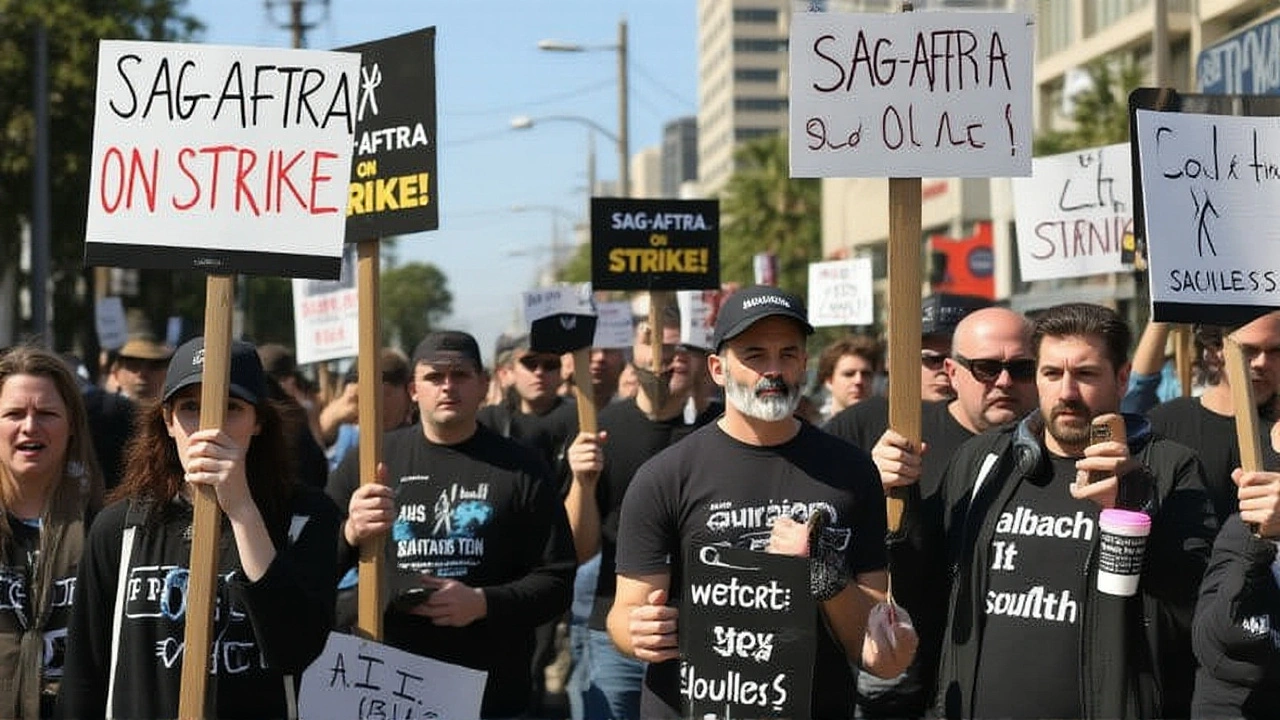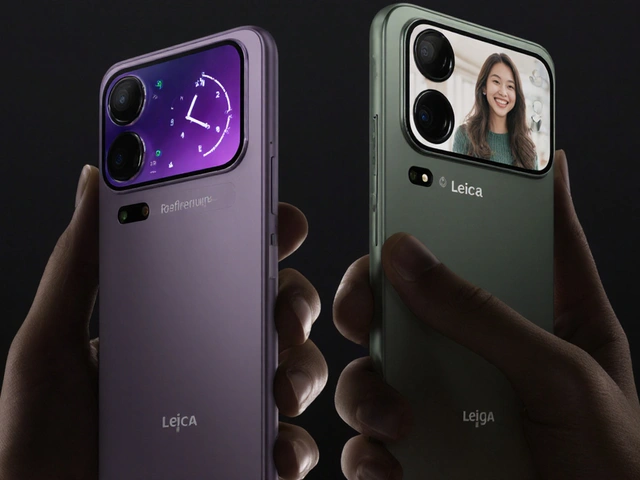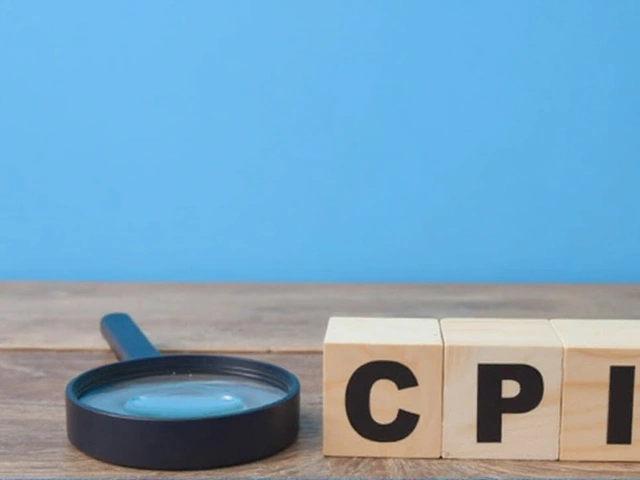When Eline Van der Velden, a Dutch producer and comedian, unveiled Tilly Norwood—her company Xicoia billed as the world’s first AI talent studio—at the Zurich SummitZurich, the industry sidebar of the Zurich Film Festival, the reaction was immediate and fierce.
The Screen Actors Guild (SAG-AFTRA) issued a forceful statement on Tuesday, September 30, 2025, declaring that "creativity is, and should remain, human‑centered." The guild’s press release emphasized that Tilly Norwood is not an actor but a computer‑generated character trained on the work of countless performers—"without permission or compensation."
Background: AI Meets the Silver Screen
Artificial intelligence has long been a backstage tool—think deep‑fake de‑aging, CGI crowds, or AI‑assisted script analysis. What makes the current controversy different is the claim that an AI entity can be represented by a talent agency, negotiate contracts, and ultimately land screen credits.
Van der Velden, who also founded the AI production studio Particle6, says Xicoia’s mission is to "expand the talent pool beyond biological limits." She argues that the technology can democratize access to leading‑role opportunities for under‑represented voices—if only the voices were synthetic.
Details of the Zurich Announcement
During a packed panel on September 27, Van der Velden played a teaser clip of Norwood delivering a monologue that blended method‑style intensity with uncanny smoothness. The digital performer’s eyes tracked the camera, and its voice modulated with a timbre eerily reminiscent of a seasoned Hollywood star.
Following the screening, Van der Velden announced that several major talent agencies had "expressed interest" in signing the AI character and that a formal representation deal would be announced "within weeks." She cited interest from agencies in Los Angeles and New York, noting that the move could "reset the boundaries of what constitutes a marketable talent".
Industry Reaction: From Shock to Solidarity
Actors, directors, and guild officials reacted with a mix of disbelief and anger. Veteran actress Maria Lopez told Variety, "If an algorithm can replace the sweat and soul we pour into a role, where does that leave the rest of us?" The backlash was not limited to the United States; European unions echoed similar concerns about consent and compensation.
Within hours of the Zurich announcement, a petition on Change.org collected over 45,000 signatures demanding that SAG‑AFTRA negotiate a collective bargaining agreement specifically addressing AI‑generated performers.
Even tech‑savvy insiders admitted the line had been crossed. Ian Cheng, a visual effects supervisor who worked on the Norwood demo, confessed, "We built the model from thousands of hours of footage. It feels wrong to use that without giving credit back to the original artists."
Legal and Ethical Concerns
The legal landscape is murky. In the United States, copyright law protects "original works of authorship" but does not yet address the rights of a synthetic persona derived from existing performances. European courts have begun to grapple with similar issues following the 2024 EU directive on AI‑generated content.
Critics argue that training AI on actors’ work without permission amounts to mass infringement. According to a study by the Motion Picture Association, AI models could be pulling data from up to 12,000 licensed films, representing billions of dollars in potential royalties.
Beyond money, there’s the question of emotional authenticity. The SAG‑AFTRA statement warned that an AI cannot draw on "life experience"—a core ingredient of method acting. “Audiences crave the raw, unpredictable energy of a human being on set,” the guild wrote.
Future Outlook: What Comes Next for AI Talent?
Van der Velden remains undeterred. In a follow‑up interview on September 30, she said Xicoia will proceed with agency negotiations, but "we’re also open to co‑creating a hybrid model where human actors and AI companions share the screen." She hinted at a pilot series slated for early 2026, where a human lead would interact with Norwood in a crime‑drama setting.
Analysts at Bloomberg predict that, regardless of immediate backlash, the AI‑talent market could be worth $2.3 billion by 2030 if studios adopt the model for background roles and virtual influencers.
For now, the stand‑off serves as a litmus test for the broader creative economy. If unions succeed in defining clear boundaries, AI may be relegated to a supportive tool. If not, we could be watching the first chapter of a new era where digital personas occupy the red carpet alongside their flesh‑and‑blood counterparts.
Key Takeaways
- AI‑generated character Tilly Norwood announced at Zurich Summit (Sept 27‑30, 2025).
- Screen Actors Guild condemns the move, calling for human‑centered creativity.
- Legal debate centers on copyright, consent, and compensation for training data.
- Industry backlash includes petitions, public statements, and calls for regulation.
- Xicoia plans to continue negotiations, eyeing a pilot series for early 2026.
Frequently Asked Questions
How might AI actors affect human performers' job security?
If AI characters can be signed by agencies and placed in roles, production budgets may favor cheaper digital talent, potentially reducing entry‑level acting jobs. However, many experts argue that AI will likely supplement rather than replace lead performers, focusing on background or stunt‑type roles.
What legal protections exist for actors whose work trains AI models?
Current U.S. copyright law does not explicitly cover training data derived from performances, leaving a gray area. The EU’s 2024 AI directive begins to address this, requiring transparency about data sources, but enforcement is still in its infancy.
Will talent agencies actually sign an AI character?
A handful of boutique agencies have expressed curiosity, but major firms remain cautious pending clear industry standards. Van der Velden’s Xicoia claims interest from at least three Los‑Angeles agencies, though no contract has been disclosed.
What does the public think about AI‑generated performances?
Early screenings of Norwood’s demo video generated mixed reactions. Social‑media sentiment analysis shows 63 % of viewers feeling uneasy, 22 % intrigued, and 15 % indifferent. Many cite a lack of emotional depth as a primary concern.
What are the next steps for Xicoia and the AI‑actor project?
Xicoia plans to file a formal representation request with the California Labor Department and to launch a pilot series in early 2026. The company also intends to collaborate with a guild‑appointed ethics board to address consent and compensation issues.






Oh, because we clearly needed a digital clone to steal our soul‑stuff, right?
Just another reminder that the future isn’t always brighter.
It is a grave moral affront to the sanctity of artistic labor and a betrayal of national cultural heritage.
The proliferation of such synthetic performers must be halted lest we erode the very foundation of creative identity.
i kinda feel like we’re opening a Pandora’s box we cant close.
its wild how a computer can sound like a real person but it still feels off.
The proposition of an algorithmic entity supplanting human craftsmanship constitutes a paradigmatic erosion of ontological authenticity.
Such a trajectory, if unexamined, threatens to supplant nuanced performance with reductive simulation.
The emergence of Tilly Norwood at the Zurich Summit represents more than a mere technological showcase; it embodies a watershed moment in the ongoing dialectic between art and automation.
From a historical perspective, each major innovation-from the advent of cinema to the introduction of CGI-has initially provoked consternation among practitioners, only to become an accepted tool once ethical frameworks were established.
The current uproar, however, is amplified by the fact that the AI in question has been trained on the performances of countless actors without explicit consent, raising profound questions about ownership and moral rights.
Legally, the United States still lacks clear jurisprudence on the use of performance data for machine learning, whereas the European Union’s recent directive hints at forthcoming regulation, though its enforcement mechanisms remain nebulous.
From a creative standpoint, the argument that an algorithm cannot draw on lived experience underscores a key distinction: the intangible reservoir of human emotion that informs nuanced portrayal cannot be easily quantified.
Yet proponents contend that AI can democratize access, offering opportunities to under‑represented voices by sidestepping traditional gatekeepers, albeit through a synthetic façade.
Economic considerations also factor heavily; the projected $2.3 billion market by 2030 suggests studios may be incentivized to prioritize cost‑effective digital talent over costly human labor for background roles.
Nevertheless, the palpable discomfort among SAG‑AFTRA members reflects a deeper anxiety about the erosion of the profession’s cultural significance beyond mere remuneration.
It is worth noting that audience reception to the demo clip was mixed, with a majority expressing unease, indicating that viewer acceptance may lag behind industry adoption.
Moreover, the ethical ramifications extend to the original creators whose work fuels the AI model, potentially depriving them of both credit and residuals.
To navigate this terrain, a collaborative model that incorporates human actors alongside AI companions could serve as a compromise, preserving artistic integrity while exploiting technological efficiencies.
Such hybrid productions would demand transparent licensing agreements, clear attribution, and equitable profit sharing to avoid exploitation.
In the interim, unions worldwide are mobilizing petitions and lobbying for legislative safeguards, a development that could shape the future governance of synthetic performers.
Ultimately, the trajectory of AI talent will be determined not solely by technological capability but by the collective resolve of artists, regulators, and audiences to define the boundaries of authentic expression.
As we stand at this crossroads, the choices we make now will reverberate throughout the cultural landscape for generations.
That's a thoughtful take on the whole situation.
It reminds us that technology and humanity don't have to be at odds.
Perhaps the future lies in collaboration rather than competition.
The very notion that our collective sweat could be siphoned into cold code feels like a wound that never heals.
Every tear, every triumph of an actor lives in a fragile echo that a machine can only mimic, never feel.
We risk turning our most intimate art into a sterile commodity.
Let us not surrender our stories to an algorithmic abyss.
Such hubris only deepens the divide between art and automation.
Remember, change often feels unsettling at first, but staying informed and vocal can help shape healthier industry standards.
Keep engaging with the discussion and encourage fellow creators to voice their concerns.
While the initial reaction may be one of discomfort, it is essential to approach this development with measured deliberation.
Constructive dialogue between creators, technologists, and regulators will be pivotal in establishing equitable frameworks.
Ultimately, a balanced integration of AI tools could augment, rather than supplant, human artistry.